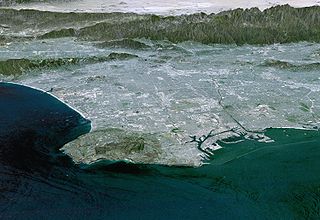
“According to [Natural Resources Defense Council staffer Kaid] Benfield, the six counties of Imperial, Los Angeles, Orange, Riverside, San Bernardino and Ventura and home to some 18 million residents in 191 cities, is dispersed over an area totaling 38,000 square miles.” (See: “Landmark California program could have huge emissions-reductions impact”). By contrast, the state’s San Joaquin Valley covers an area of approximately 25,000 square miles – give or take.
At one time part of the L.A. crowd myself, even if but for a brief time, I am nevertheless all too familiar with the likes of, um, make that “dislikes” of traffic congestion and gridlock and, yes, the air condition which is deplorable at times.
Related to this, the NRDC staffer insists, “Perhaps unsurprisingly, the region’s air quality is notorious: it is the worst in the country for pollution by ozone smog, which can impair breathing function, according to the American Lung Association. It is the second worst for particle pollution, which causes heart and lung disease and premature death. In addition, two southern California counties – Los Angeles and Orange – are among the nation’s 20 riskiest for developing cancer from breathing toxic air pollution, according to the federal Environmental Protection Agency. The region is fifth worst for per capita carbon emissions from transportation (though its mild climate and resulting low residential energy demands help keep overall emissions relatively low).”
Just about the time I left in ‘88, the Los Angeles-to-Long Beach Metro Blue Line light rail corridor was nearing completion. This was the area’s first foray into electrified passenger rail since the departure of the Pacific Electric system beginning some 60-plus years earlier, a portion of which survived until 1961.
Back on track, it seems as though the entire region has been playing catch-up as the area now has amassed a collection of six light rail and subway transit lines covering some 87 miles with about 360,000 daily boardings. An 8.5-mile Crenshaw/LAX (Los Angeles International Airport) Transit Corridor Project extension connecting the Expo and Metro Green lines along Exposition Boulevard has recently been approved. There is even a streetcar line proposed for Los Angeles’ downtown.
In “How California is planning growth for a prosperous economy and clean environment,” Benfield adds:
“The SoCal [Sustainable Communities] strategy [STS] aggressively invests in public transit to serve both current residents and four million new ones, along with 4.2 million new jobs, 87 percent of which would be within a half mile’s walk of transit service. The new strategy is also projected to reduce pollution-caused respiratory problems by 24 percent, resulting in $1.5 billion per year in health care savings, and to save over 400 square miles of farmland and other open space from development.”
![320px-FLV_California_train[1]](https://alankandel.scienceblog.com/files/2012/11/320px-FLV_California_train1-300x169.jpg)
Even though a long road ahead as far as air-pollution reduction is concerned, Los Angeles and environs are “on track” to recovery.
Image at top: NASA
– Alan Kandel